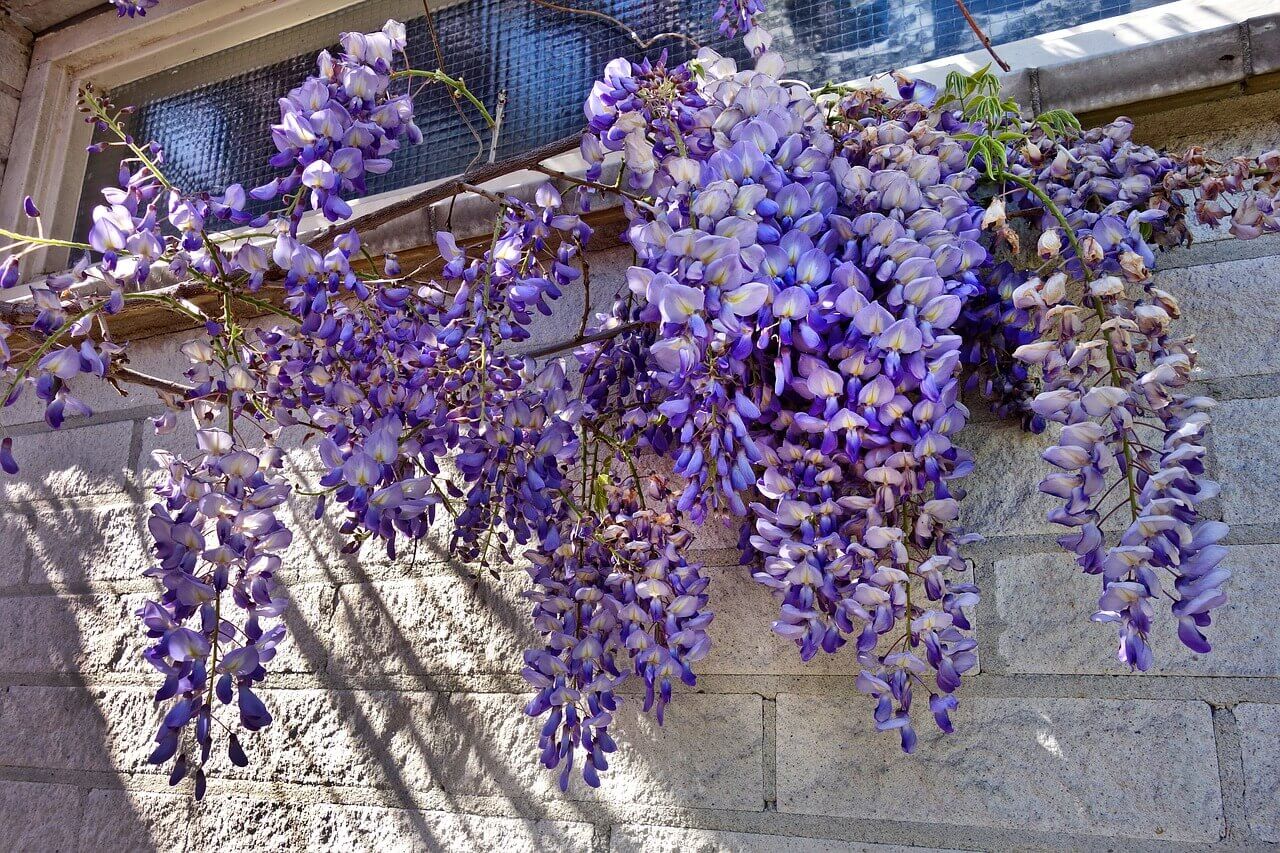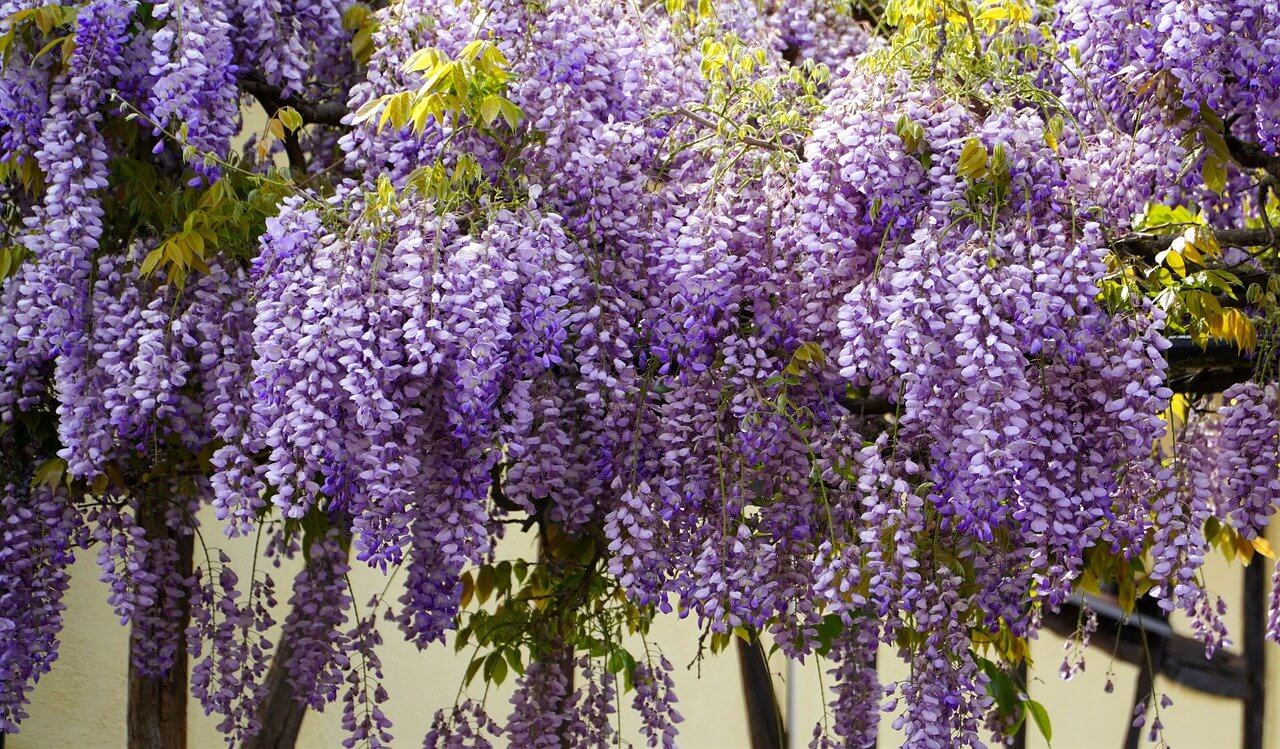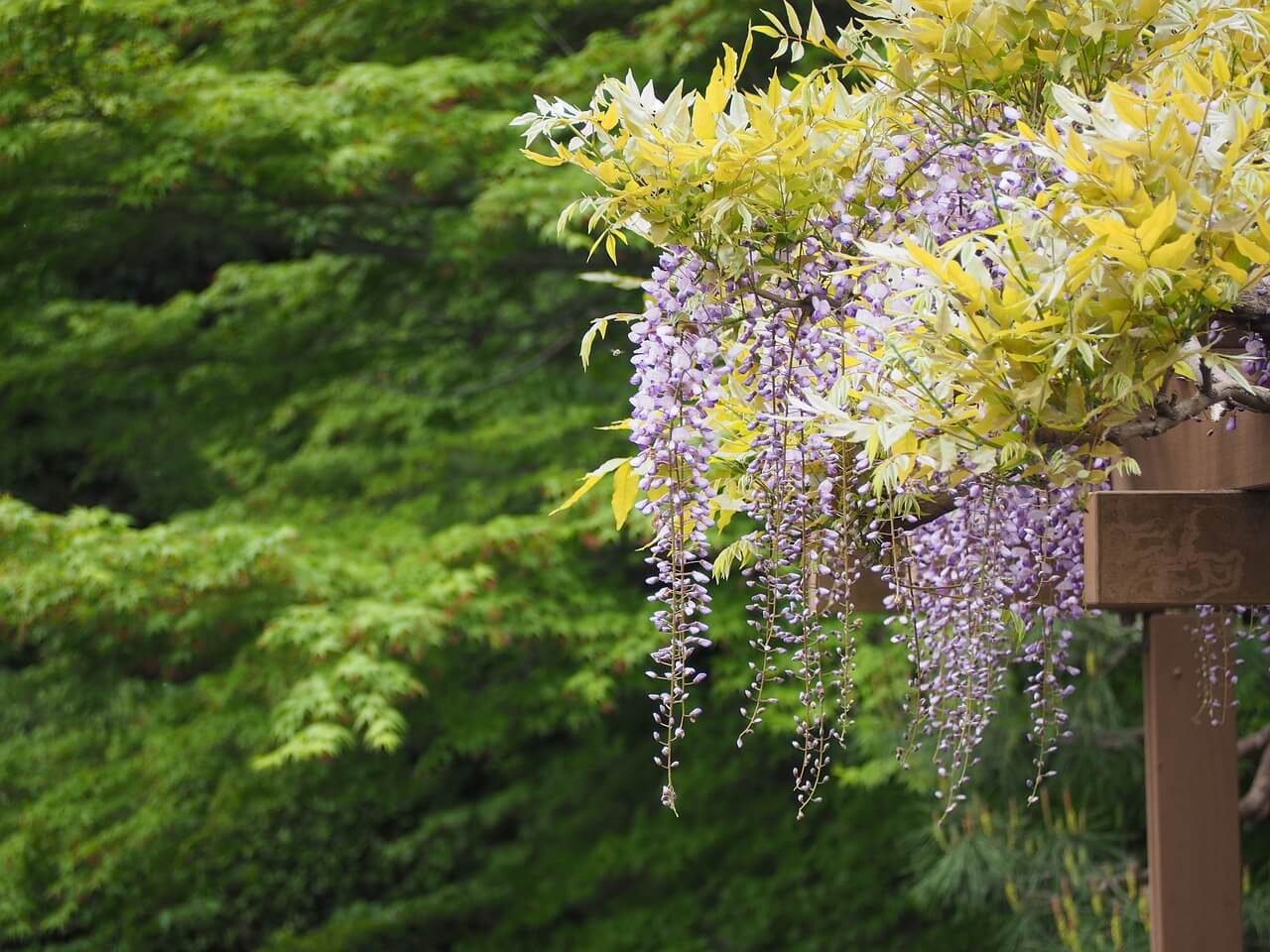Wisteria is a fast-growing vine that boasts show-stopping blooms throughout the spring and summer. If you have the time to keep up with regular pruning to manage its quick growth, it can be integrated into many different landscaping designs. In this article, we’ll discuss how to take care of wisteria and get it to reach its full potential.
What You'll Learn Today
How Often To Water Wisteria?

Since wisteria is such a tough, hardy perennial, it doesn’t take much to make it thrive. These plants are fairly drought-resistant once they are established.
Any outdoor plant – including wisteria, needs plenty of water when it’s first planted. If you’ve just planted yours, you’ll need to keep the soil consistently moist the first season.
You can test out the soil by sticking your finger into the earth a few inches, or use a moisture meter. If the soil feels dry, give it a good soak.
After its first season, as long as it’s healthy and growing well, your wisteria will only need supplemental watering during dry periods and part of the growing season. If your area gets less than an inch of rain per week, you should water more often.
From about July until about September, wisteria is working hard to produce buds that will become next year’s blooms. During this time, your plant would benefit from extra watering.
How Much Sun Does Wisteria Need?
Wisteria is a full sun plant. This means that they do best in areas that get at least 6 hours of unobstructed sun per day.
Your vine may grow well in areas that get more shade, but the likelihood of flowering decreases with less sun. Optimal sunlight is needed to provide the energy that is required for blooming.
If you have any nearby trees that are shading your wisteria, you may need to trim them if possible to give the plant extra sunlight.
Why Is My Wisteria Not Blooming?

If your wisteria isn’t producing the blooms you were hoping for, it may need some extra TLC. There are several reasons why wisteria can withhold flowers, including:
It’s Overgrown
Wisteria is a vigorous grower and needs pruning twice per year at a minimum. Pruning should take place at least once in late spring/early summer and once in later winter.
When its growth gets out of control, wisteria’s new growth can smother or conceal flowers underneath branches. To fix this, you may have to do some hard pruning.
To tackle overgrown wisteria, first, remove any branches that are dead or dying. Then, cut back all of the smaller shoots (called suckers) that may be growing out of the ground. Suckers take up valuable energy that should be used for producing blooms instead.
Next, trim any branches that look unruly or that are growing too close together. Those branches are likely competing for sunlight and airflow.
Once you get the growth under control, you may have to wait until the next growing season to see the fruits of your labor. Until then, be sure to keep up with regular pruning to manage your wisteria’s growth.
It’s Too Young
One of the major complaints that gardeners have about wisteria is that it takes so long to bloom at first. If you plant your wisteria from seed, it can take anywhere from 10-20 years to see it flower.
If your wisteria is less than 10 years old, be patient. In the meantime, you can make sure you’re giving it the best possible conditions to ensure that it flowers on time, when it’s ready.
The Weather is Unseasonably Cold
If your area experiences a late spring frost, you may notice wisteria flower buds dying off before they bloom. This vine can be sensitive to the cold.
Once the weather warms up, there is still hope for a second bloom later in the growing season. But it’s possible that you may have to wait until next year to see flowers.
In the meantime, evaluate the growing conditions. If you live in an area with colder winters, it helps to spread mulch over the base of the plant to protect its roots from the cold. Just make sure to spread about a 4-inch layer, and keep the mulch a few inches away from the vines.
For more tips on how to get the best blooms, this video is a great resource:
How Long Does Wisteria Bloom?
Wisteria’s beautiful blooms usually make their appearance during mid to late spring. Depending on your climate, you can expect to see blooms in May or early June. It may take as long as 2 months for all of the season’s blooms to show up.
Once the flowers bloom, they usually last about 3-4 weeks before dying and eventually falling off the vine. Some gardeners are able to achieve an extra round of blooms by deadheading the flowers as soon as they fade.
How To Feed Wisteria?
Wisteria generally does just fine without any fertilizer at all. But the occasional feeding could encourage lush foliage and more blooms.
When selecting a fertilizer, keep in mind that nitrogen usually produces more leaf growth, while phosphorus encourages flowering. Many gardeners add bone meal (which contains phosphorus) to the soil in the spring, and rock phosphate in the fall.
What To Plant Under Wisteria?

Wisteria is an aggressive grower and tends to compete for water and nutrients with other plants. Depending on where you plant it, it will also shade the area underneath it.
For these reasons, many people either choose to grow equally resilient plants, such as shady groundcover. Here are some hardy shade-lovers that could work well:
- Sweet woodruff (zones 5-8)
- English ivy (zones 4-9)
- Pachysandra (zones 4-9)
- Goldenstar (zones 7-8)
- Vancouveria (zones 5-9)
- Wildflowers (check your local garden store for wildflower seeds that are hardy in your zone)
Another option is to place shade-loving container plants under your wisteria. That way, you won’t risk the wisteria choking out what you’ve planted in the ground.
Wisteria is a forgiving plant, so even if you make a mistake it will likely bounce back. Some gardeners advise against planting wisteria at all due to its persistence – it can get out of hand quickly and damage the structure it climbs if neglected.
But if you have the time and motivation to keep it in check, its brilliant blooms are well worth the effort.
Wisteria Key Facts
| Botanical Name | Wisteria frutescens |
| Common Names | American Wisteria |
| Type of Plant | Deciduous woody vine |
| Origin | Eastern United States |
| Sun Requirements | Full sun |
| Water Requirements | Drought-tolerant, but appreciates supplemental water during dry periods and blooming season |
| Soil | Fertile, slightly acidic soil that does not dry out too quickly |
| Bloom Time | April – May |
| Common Pests | Aphids, mealybugs, scale, borers |
Can I make a home made feed for my Wisteria?
Absolutely! This is not a particularly “hungry” plant, so a little feed every now and then with natural ingredients will suit it just fine. Eggshells boiled in water then applied when cool is a great option, as is a little bone meal.